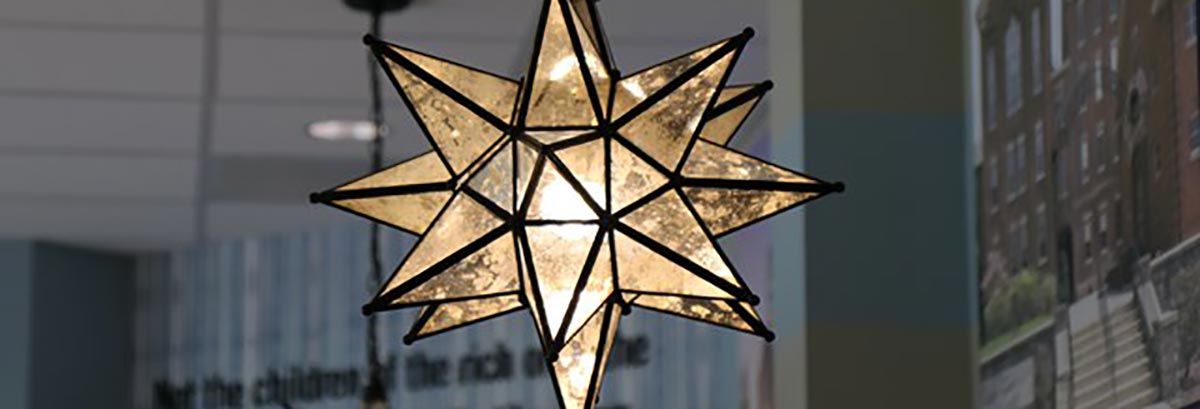Teaching Spotlights
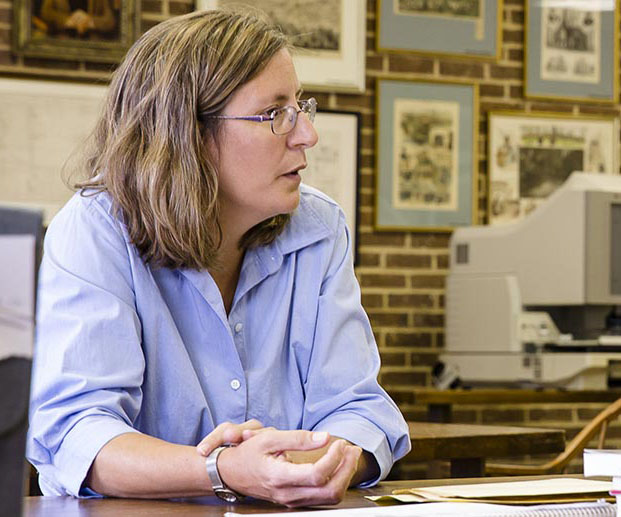
Jane Berger: Developing "Critical Consumers of Digital Media" in a First-Year Writing Seminar
In a 2016 pilot initiative supported through a grant from The Andrew W. Mellon Foundation, history professor Jane Berger was one of a group of faculty members who integrated a digital remix assignment in her class, “Race and Gender in the United States.” One of the learning outcomes she desired was for her students to become “critical consumers of digital media.”
The First-Year Writing Seminar’s engagement with a digital storytelling is entering its third year (fall 2017). The digital remix assignment concept was developed initially by Crystal Fodrey, Co-Director of the First-Year Writing Seminar, Director of Writing at Moravian, and Assistant Professor of English, and Meg Mikovits, Writing Center and Writing Fellows Program Coordinator. In order to promote digital learning and multimodal literacy outcomes, they encouraged faculty to design assignments in which students would transform the content from their academic research paper into a digital narrative directed toward a different audience. This approach addressed the goals of having students be able to use current digital media effectively in professional and academic communications; to be engaged as creators of digital artifacts, not simply consumers of digital media; to improve their digital literacy skills; to become more reflective and critical in their interactions with the digital realm; and to recognize the relevance of the humanities to a world in which digital media is ubiquitous. Each professor took the concepts of the digital remix and designed a model for how this might work.
Noting how often her students turn to YouTube for information, Dr. Berger decided to have them develop short videos using iMovie to communicate the content and argument of their research paper into another modality and for another audience. In particular, Dr. Berger wanted her students to become “critical watchers” of digital content. She realized that by creating videos with a particular argument embedded, they would become more aware of how “messages” are created and communicated in digital video clips.
Deborah Halliday: Clinical Laboratory Simulations for Nursing Students
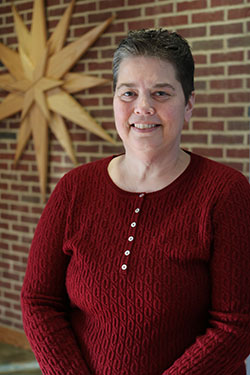
The School of Nursing provides clinical laboratory instruction for the prelicensure nursing students, including the use of simulation. With the construction of the new Sally Breidegam Miksievicz Center for Health Sciences, they will be able to utilize state-of-the-art high fidelity and low fidelity clinical simulation laboratory spaces. The landmark National Council of State Boards of Nursing study published in 2014 verified that nursing student learning outcomes improve when 25% to 50% of clinical education is conducted in simulation settings.
New facilities require new training for the nursing faculty. Nursing professor Deborah Halliday received a TLC program grant for '17-'18 to organize and lead a training program for other nursing faculty. In June 2017, she attended the International Nursing Association for Clinical Simulation and Learning. Next she has focused on developing robust clinical laboratory simulation experiences for students enrolled in their first two clinically-based nursing courses. She has taught her colleagues how to facilitate these simulation scenarios with their clinical groups.
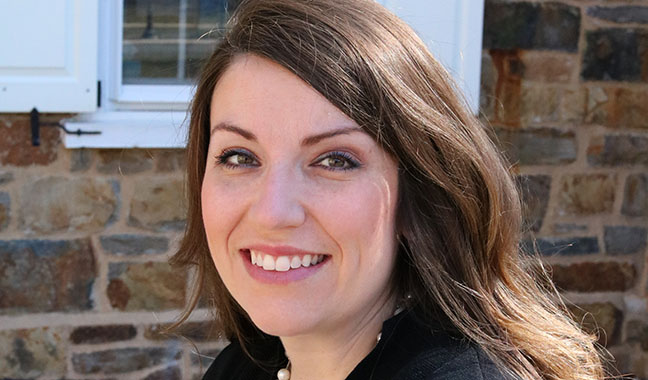
Taylor Grube: Team-Based Learning in "The Professional Nurse"
Supported by a Summer 2016 Pedagogy Development Grant from CAT/TLC, Nursing professor Taylor Grube revised a clinical practicum course--The Professional Nurse--for both the undergraduate nursing program and the accelerated post-baccalaureate nursing program.
Her evidence-based implementation of a team-based learning format promotes positive interdependence, accountability, responsibility, interaction among peers, development of social skills, and group processes, while facilitating the deeper learning of course content.
In NURS 317: The Professional Nurse, the last course in the pre-licensure nursing program curricula, students transition into the role of entry-level practitioner. To be successful, they must strengthen their critical thinking skills, autonomy, interdependence, leadership, and collaboration. Team-based learning is a cooperative learning strategy that draws on theoretical perspectives from Social Interdependence Theory, Social Development Theory, Constructivist Theory, and Operant Conditioning (Stiles, 2006). The focus is to develop higher-order critical thinking and problem-solving skills as well as collaboration, all of which are key in the nursing practice setting. The Institute of Medicine (2010) calls for nursing and other healthcare professionals to function as a team, rather than in isolation, to improve patient care. Incorporating team-based learning as a classroom innovation will help to facilitate the collaborative process that is expected of our students in their professional careers.
Click here to read the full report and references.
Ruth Malenda and Shannon Talbott: Guiding Questions in Quantum Mechanics and Modern Algebra
Ruth Malenda (Assistant Professor of Physics) and Shannon Talbott (Assistant Professor of Mathematics) dedicated their Summer 2016 CAT/TLC Pedagogy Development Grant time to the collaborative creation of a series of guided questions for students in the Quantum Mechanics course for Physics students and the Modern Algebra course for Mathematics students.
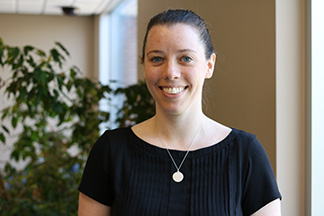
Modern Algebra is an abstract and difficult subject, so while teaching this for the first time during Fall 2015, Shannon noticed that students were often able to grasp individual concepts but struggled to chain together several common threads to understand how the material connected not only to other material in the course but also to other material in other mathematics courses. The topics in Quantum Mechanics are similarly abstract and require frequent reflection to understand how these pieces relate to one another and fit together as whole. Creating a framework of small questions will help train the students on how to learn via inquiry, leading to a deeper understanding of the material.
For Modern Algebra, Dr. Talbott combed the textbook to identify examples and explanations that were dense or terse, and she created questions around these concepts in order to slow down the students as they read these ideas, allowing them the opportunity to delve deeper in their thoughts as they process the information. As students were expected to bring questions for the class to discuss, this method requires high levels of active participation. The aim is to train the students to learn via inquiry. Dr. Talbott noted that students were able to articulate pointed questions about the material, which enabled the class to have better discussions. She will revise and use the guided questions for the next iteration of the course, as well.
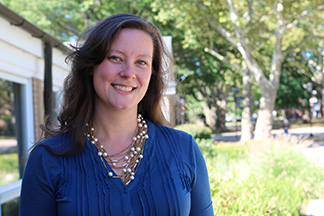
In Quantum Mechanics, Dr. Malenda used guided inquiry to help students bridge from one form of mathematical notation used in the textbook to another used later in that same text, since she had observed students struggling to connect the material in the two parts of the course. She notes that the transition is common to most Quantum mechanics textbooks, and the creation of the guiding questions enabled her to introduce this conceptually difficult material earlier in the hands-on aspect of the course. As she teaches this course in the Spring 2017 semester, she will collect feedback from the students and continue to refine her approach.
Sandy Bardsley: iMovie History Project on Women in Europe 500-1700
In the Fall 2015, with support from a mini-grant for Digital Pedagogy Course Development--one of the initiatives funded by a college grant from The Andrew W. Mellon Foundation--Associate Professor of History Sandy Bardsley decided to try something different. Driven by her initial skepticism, she decided to have her students use multimedia digital storytelling to analyze the lives and representations of medieval and early modern women. She had questions: would they create something analytical instead of purely biographical? Could an iMovie project accomplish many of the same learning outcomes as a traditional-style research paper? Could it go beyond?
From the results we viewed in December 2015, at the Undergraduate Research Conference on Medieval and Early Modern Studies, the answer is yes. Drawing on the skills gained in the class, students did meet the learning outcomes of research, synthesis and analysis of source material.The inclusion of visual metaphors and background music enabled several students to add another dimension: they humanized the figures and foregrounded the emotional complexity of their stories.
The process of locating, evaluating, selecting, and integrating images led to learning more about the images available online, their quality, the time period of their creation, contemporary copyright laws and fair use, and other basics of visual literacy. The requirement to include different voices with different interpretations of the figure helped students avoid simplistic, reductive thinking about these women.
For the audience, the presentations were engaging as well as informative. Dr. Bardsley herself seemed overall content with the results. While she would never advocate the use of digital technology for its own sake, this project–or any thoughtfully designed one–can offer additional valuable learning opportunities for students. And: they loved it!
Angela Fraleigh: Professional Practices in Art--Digital Media and Social Media
Even as the core practices and values in the humanities endure, the ubiquitous and ever-changing digital influences require an awareness of how to teach our students to thrive in this environment. Associate Professor and Chair of the Art Department Angela Fraleigh is an accomplished visual artist who, in addition to teaching courses in art, offers the course “Professional Practices,” one of two capstone experiences for studio art majors. The class prepares students for the business aspects needed to be successful after college in a professional life in the fine arts, and the rapidly changing technological landscape provides fresh pedagogical challenges each year.

“Over the 8 years I’ve been teaching this material the methods of how an artist presents oneself have changed dramatically,” Prof. Fraleigh explains, “The tenets of professionalism are the same- clean and clear writing, including an artist statement, thesis, press release and resume, as well as strong image documentation and cover letter. But HOW that information may be disseminated, and to WHOM has grown exponentially.” Supported by a Digital Pedagogy Course Development stipend made possible with funding from The Andrew W. Mellon Foundation grant to Moravian University, Prof. Fraleigh worked to help her students navigate this changing landscape.

Her goals for the course redesign were to “broaden our course content to include not just a basic knowledge of how to set up a website, Facebook page, Twitter account etc. but ask how all of these different platforms might be used to build a larger narrative about the artist and their work. The digital storytelling in will provide as much opportunity for interesting discussion and learning as it does for prosperity and financial growth.” The democratizing, networking characteristics of social media can “create opportunities for access to otherwise untouchable figures in the art field.”
Student and football player Brayan Arroyo shifted from a more typical college student social media presence to a carefully curated artist’s Instagram feed and website focusing on his work about immigration and identity. He has made sales, received commissions, and lined up job interviews.While the course covered aspects of all major social media platforms, the class focused particularly on Instagram because it has become the “platform of choice for creative fields.” Beyond using social media to for personal, social posting, the class discussed the power of sharing and connecting specifically about art. Students worked on “developing a more complex and rich identity on social media that not only showcases the work they are doing, but tells a narrative that people can connect with.”
Another student, Gigi da Silva showcased her work on the nature of human mortality. Her thesis exhibition featured an installation of 4,598 paper airplanes that she hand-folded and strung up in the Payne gallery. Each plane had written on it the name of a person who had been buried in the cemetery near her childhood home. She recorded every single person’s name on each piece of paper, to mediate over the passing of time, the fragility of life and to ask bigger questions about the human experience. Her earlier Instagram feed gave no glimpse of the depth of her artistic work; her new social media narrative on Instagram and her website resulted in local press and an increased interest in her work.
John Black: Digital Mapping and the Construction of "Place"
For his course on British Renaissance and Neoclassicism, Associate Professor of English John Black developed a new digital mapping assignment to help students explore the construction of “place” and connections between place and literature.

In the Spring 2016, supported by Digital Pedagogy Course Development stipend funded through the grant from The Andrew W. Mellon Foundation, Dr. Black designed a project using Google Maps in which each student contributed material to the build the map and wrote an accompanying essay analyzing its relevance to the overall course. He wanted students to “examine the role of place in literary works from the period, not only as physical, identifiable locales and settings that provide foundational ‘grounding’ aspects in narrative, but also as constructed elements that augment narrative with with enriching detail and often evoke resonances of deeper symbolic value.”
Although the project in its initial run had its “rough spots,” both professor and students found it valuable. Dr. Black notes that it encouraged greater student engagement by offering “yet another ‘site of entry’ for students in the course.” He already has plans for how he will refine and expand the assignment in future iterations of the course.
Thago Mota: Changing the Course Structure for a Class on Mobile Computing
Computer Science professor Thyago Mota spent the summer of 2016 developing a new structure for his Mobile Computing course. This field already demand frequent updates, and Dr. Mota hoped to move more of the lectures and explanations to outside of class so that students could dedicate in-class time to conversation and creation.
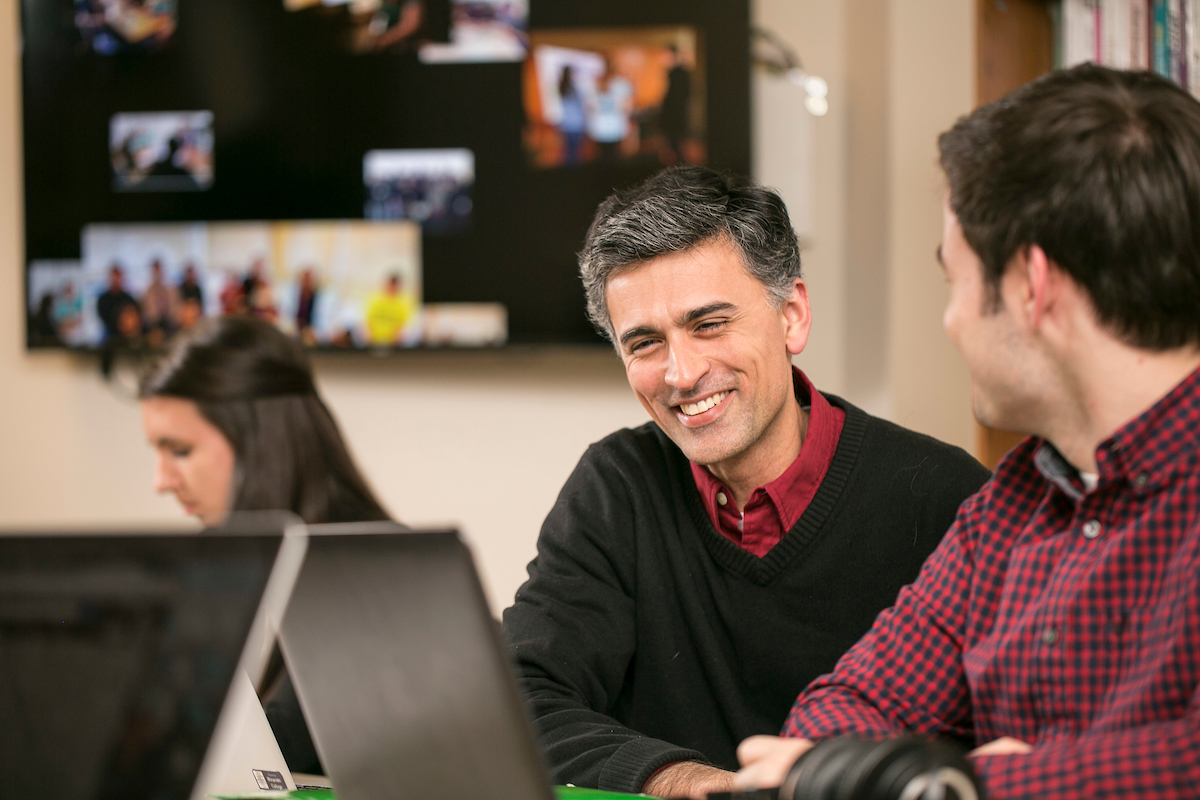
His labor-intensive project involved creating videos using slides, images, animation, and voice-over to explain the key concepts in mobile computing. These materials can be updated later, as needed. Students watched the videos in preparation for the class, and then took a short quiz in class to gauge their understanding. Dr. Mota then had the entire class period to clarify concepts and to engage the students in hands-on creation and in-depth discussions. Based on his experience, he can serve as a reference for other faculty interested in this format, which some call the "flipped classroom" model.

